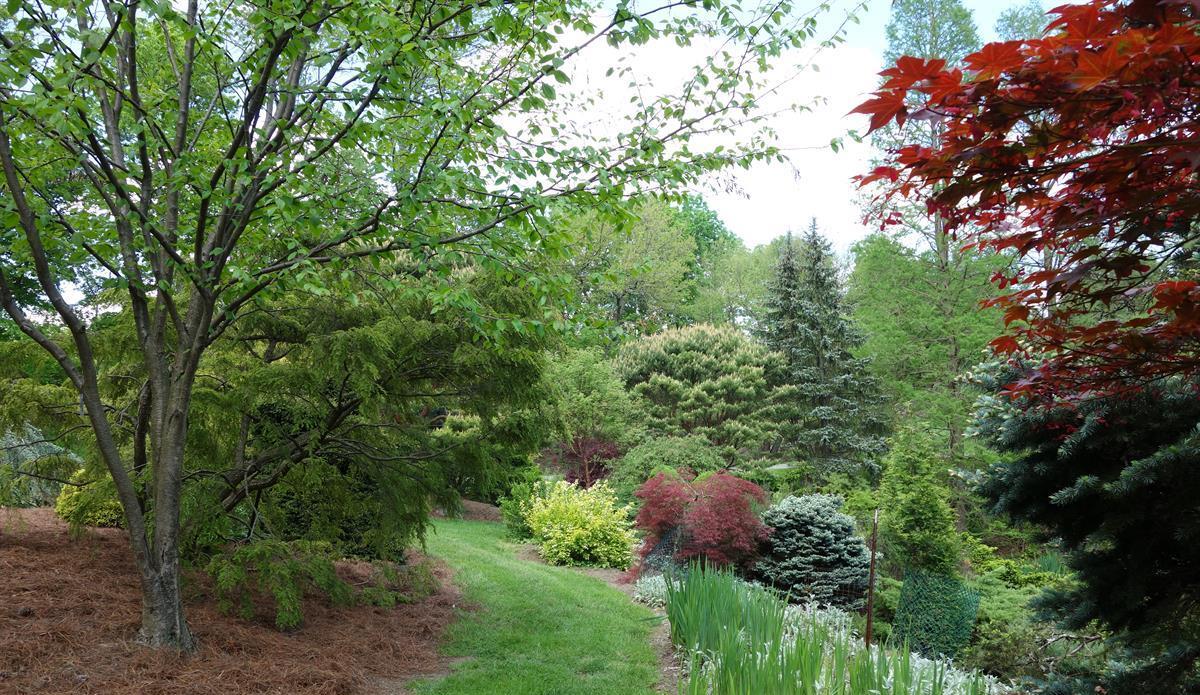| |
|
|
|
|
Good Afternoon Great-Gardeners,
Mother Nature has been her normal fickle self. Just when we thought we would have a warm spring, winter hits. There has been a picture floating around facebook of a guy on his lawn mower mowing his grass while it snowed. Only here in Ohio can you find that.
I advise against planting any warm season vegetables or annuals yet. Wait until our Frost Date (May 15th). You can plant trees, shrubs, perennials, roses and cool season vegetables now, if the ground is workable.
If you have any questions, comments or suggestions, hit reply. I would love to hear from you. As always, have a great-gardening day.
Sincerely,
Holly |
|
|
|
|
Live Trends Succulent Baby Shoe
These cute ceramic baby shoes are great for a baby shower gift or even just for those who love shoes. Comes with a darling succulent planted inside.
$12.99 each
|
|
|
|
| |
10" Boston Fern Hanging Baskets
2 for $25
or
1 for $14.99
(Regular $19.99 ea)
Sale Ends
April 17, 2016
|
|
How do you make a pineapple turnover?
Scroll down to bottom of email for answer.
|
|

|
|
By Gregory H. Revera - Own work
|
|
|
Full Pink Moon
The full moon of April is called 'Full Pink Moon' due to the creeping phlox that blooms during this month.
It is also called 'Full Sprouting Grass Moon' and 'Full Fish Moon'
|
|
'Little Dragons Azure Flame' Nemesia
Both frost and heat tolerant this beautiful plant can start your gardening season off early.
Vibrant purple and white bi-color flowers bloom all spring and summer long.
Pair with pansies to add spring color to your front porch or yard.
|
|
Wilson's Garden Center
10923 Lambs Ln.
Newark, Ohio. 43055
740-763-2873
740-763-2874 (Fax)
office@great-gardeners.com
|
|
April Hours:
Monday - Saturday:
9 am - 7 pm
Sunday:
11 am - 6 pm
|
|
| Try tickling its stomach. |
|
We are a family owned and operated garden center specializing in plants that thrive in Central Ohio
For more information about our store please
Visit Our Website |
|
|
2016 is the year of the 17 year cicada and we have already had many phone calls and emails asking what will happen when they emerge.
Here is what you need to know:
- Most cicadas are not harmful in small amounts and you may hear them periodically through out the summer each year, but when large broods emerge in the thousands and millions they can cause significant damage to trees and shrubs.
- The 17 year cicadas should start emerging late April into May, depending on when the ground temperatures warm up to reach around 64 degrees Fahrenheit.
- Adult cicadas do not eat. What causes the damage to trees and shrubs is the female cicada seeking out a place to lay her eggs. Trees and shrubs with branches that are 1/2" to 1" in diameter or less are her favorite. She cuts slits into the twigs where she then deposits her eggs laying up to 600 eggs over a period of time.
- Heavy infestations of cicadas often destroy young trees and shrubs. Mature trees usually survive the damage, but may look unsightly for a few years.
- Herbs, vegetables, pine trees, fir trees and most flowers do not need protected.
- The most effective way to protect your trees and shrubs is a 1/4 inch mesh netting completely covering them. We are currently searching for a source.
- Insecticides are ineffective on cicadas.
|
|
Cool Season - Cool season crops enjoy cool weather and are somewhat cold tolerant. They are generally set out as transplants or directly sown into the garden in early spring. (April 1 -15th).
Warm Season -Warm season crops are generally set out or direct seeded after the danger of frost has past and the ground is warmer. In Ohio this is around May 15th. If planted sooner stunted growth, blossom end rot or death may occur. |
|
Direct Sow Cool Season Crops
|
|
Beets - Sow at a depth of 4 times the size of the seeds; plant every 3 weeks for crops through the season. Soak seeds in warm water 24 hours before sowing to aid in germination.
Radishes - Sow at a depth of 4 times the size of the seeds; plant every 2 weeks til mid-spring, then again late summer. Harvest radishes as soon as they are large enough to eat. The longer they remain in the ground, the spicier they become.
Carrots - Sow at 1/4" depth, planting ever 3 weeks until early summer. They are not tolerant of drought conditions or compact soil. Watch for orange crowns at the soil level as the plants mature. If this occurs, mulch to keep the sunlight from turning them green.
Turnips - Sow at a depth of 4 times the size of the seeds. Continue successive sowings while the ground is still cool, and again in late summer for a fall crop. (Best crop is in the fall.) Apply mulch or soil around the tops of the roots to eliminate green shoulders.
Spinach - Scatter seed and cover lightly with soil. Plant every 2 weeks for continuous harvest. Plant some in a shaded spot to keep harvests going into the summer months as it bolts (goes to seed) when the days are hot and long.
Swiss Chard - Direct sow in spring, or start seedlings indoors in March to transplant in early April. Some varieties of Swiss char are more tolerant of frost than others, take care not to plant too early in spring to avoid damage.
Lettuce - Scatter leaf lettuce seeds and lightly cover with soil as soon as the ground is workable in the spring. Several successive plantings of leaf lettuce will provide a constant crop for fresh salads.
Peas - Sow seeds about 1" deep and 2" apart in rows as soon as the ground is workable in the spring. If a trellis or fence is not feasible, look for upright pea varieties that don't need a support to climb on. Soak pea seeds 12-24 hrs prior to planting.
Onions - Onion sets and bunching green onions are planted 1-2" deep 3" apart early April to mid-May. As the onion matures, mulch around the top to get a nice tapered "neck". Harvest early for green onions; let others mature to bulbs.
Potatoes - Plant seed pieces in shallow trenches 3 1/2 to 4 1/2 " deep, spaced 9-12" apart, and cover with an inch or two of soil. A well drained soil high in organic material is preferred. |
|
Arboretums, gardens and conservatories are a great way to escape from the city, unwind and enjoy all that nature has to offer. Get inspired by these beautiful places. Each newsletter I will feature a different place in Ohio for you to check out. Take the family and have fun.
P.S. Don't forget to share some pictures with us. |
|

|
|
By Daderot - Own work, CC0,
|
|
|
|
|
|
|
| |
|
|
| |
|